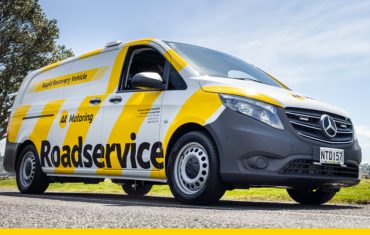
Why telematics isn’t just for big fleets
Fleet ManagementHow do you know your vehicles are where they should be? Need to improve your driver safety record but don’t know where the problems lie? Want to know how much time is wasted sitting in traffic or following meandering routes?
To manage your fleet effectively and make decisions that improve efficiency, cost, and safety, you need to know the answers. You can get those answers with telematics.
What is telematics?
Telematics allows you to collect valuable fleet performance data, captured by in-vehicle technology, providing a comprehensive overview of your fleet performance to help identify additional improvement and savings opportunities.
You can track and gather data about vehicle location, driver behaviour, and engine activity. This data is captured, collated and presented to you through an online reporting platform.
Fleet management telematics collects data from the following sources:
- Global Positioning Systems (GPS): Precise timing signals via GPS allow tracking of or location, speed, and movement within points of interest (geofencing).
- Engine diagnostics: For fuel efficiency, odometer readings, servicing requirements.
- Sensors: These can be positioned in the car and allow data to be collected when doors are opened, the tail lift is raised, or monitor the temperature in a trailer. They’re often used to monitor driver behaviour like erratic braking, and harsh acceleration and cornering.
A telematics system will gather this data in one place and build a visual that allows you to monitor the fleet in real-time, as well as building out reports that compare different drivers, vehicles, or other components.
Telematics for the small-to-medium sized fleet
Large fleets have been using telematics for years. Recently, as it’s become more affordable telematics has been adopted by many smaller businesses. Telematics advantages include:
Safety
- Monitor driving behaviour – like speeding, harsh braking and cornering – to proactively identify and address at-risk drivers, promote safer driving practices, reduce accidents and lower insurance costs. Access crucial data to better investigate accident causes.
Performance
- Monitor and reduce unnecessary idling to reduce costs and engine wear; identify underutilised vehicles to consolidate fleet size; measure engine hours to improve maintenance scheduling; track assets to manage job scheduling, route planning and find stolen vehicles; publish information about how much excessive idling and harsh driving costs the business, incentivise your drivers to buy-in to improved productivity and fleet efficiency initiatives; improve utilisation of vehicles by monitoring and spreading the workload; use geofencing to oversee and monitor vehicle territories; measure downtime when vehicles are being serviced and/or repaired; support improved route planning.
Costs
- Improved driver behaviour reduces fuel use and reduces maintenance issues. You can also minimise non-essential vehicle use and initiate pre-emptive maintenance activities for high workload vehicles. Match vehicle locations and fuel card use to mitigate fraudulent expenses; track and recover stolen vehicles
Even with a small number of vehicles, monitoring and managing a fleet can be tricky. Telematics data, available in near real time, provides more opportunities to improve the safety, productivity and profitability of your fleet and your people.
Are you ready to get started with telematics?
We have a step-by-step guide introducing you to installing telematics in you fleet and how this technology can benefit you.
 Driving Insights
Driving Insights




